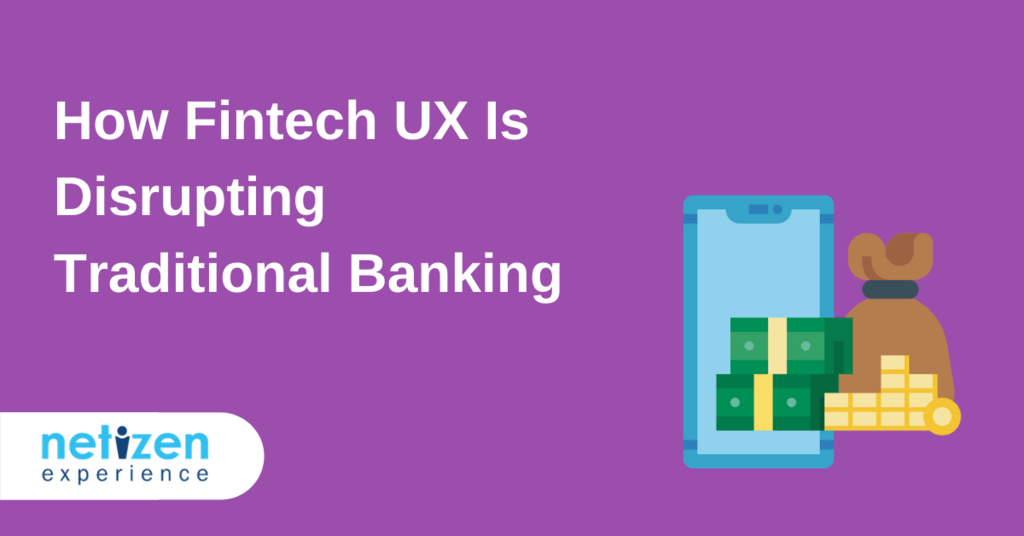How and Why Has Fintech Disrupted The Banking Industry?
KPMG reports that in 2019, global fintech investment came up to a total of $135.7 billion and predicts that 2020 will be another big year for fintech, especially with the ongoing evolution of AI and blockchain. With the pandemic, online-only banking services are also seeing growing demands from consumers.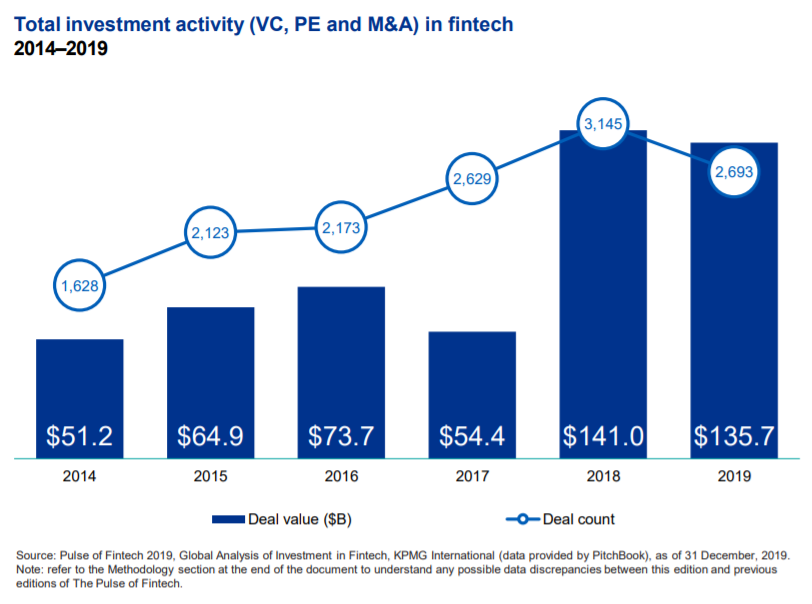
Credit: https://assets.kpmg/content/dam/kpmg/xx/pdf/2020/02/pulse-of-fintech-h2-2019.pdf
In this Article
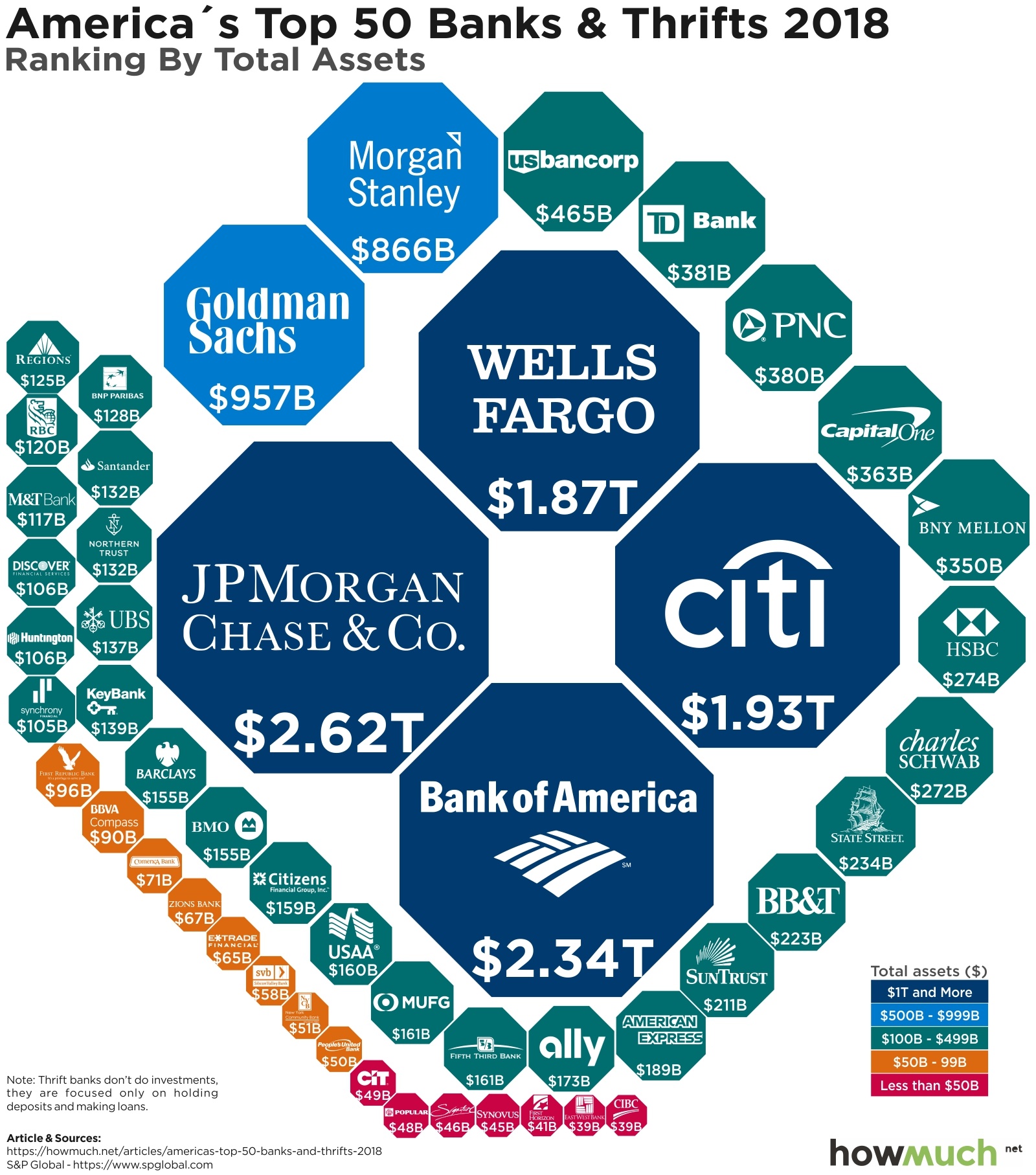
Credit: https://howmuch.net/articles/americas-top-50-banks-and-thrifts-2018
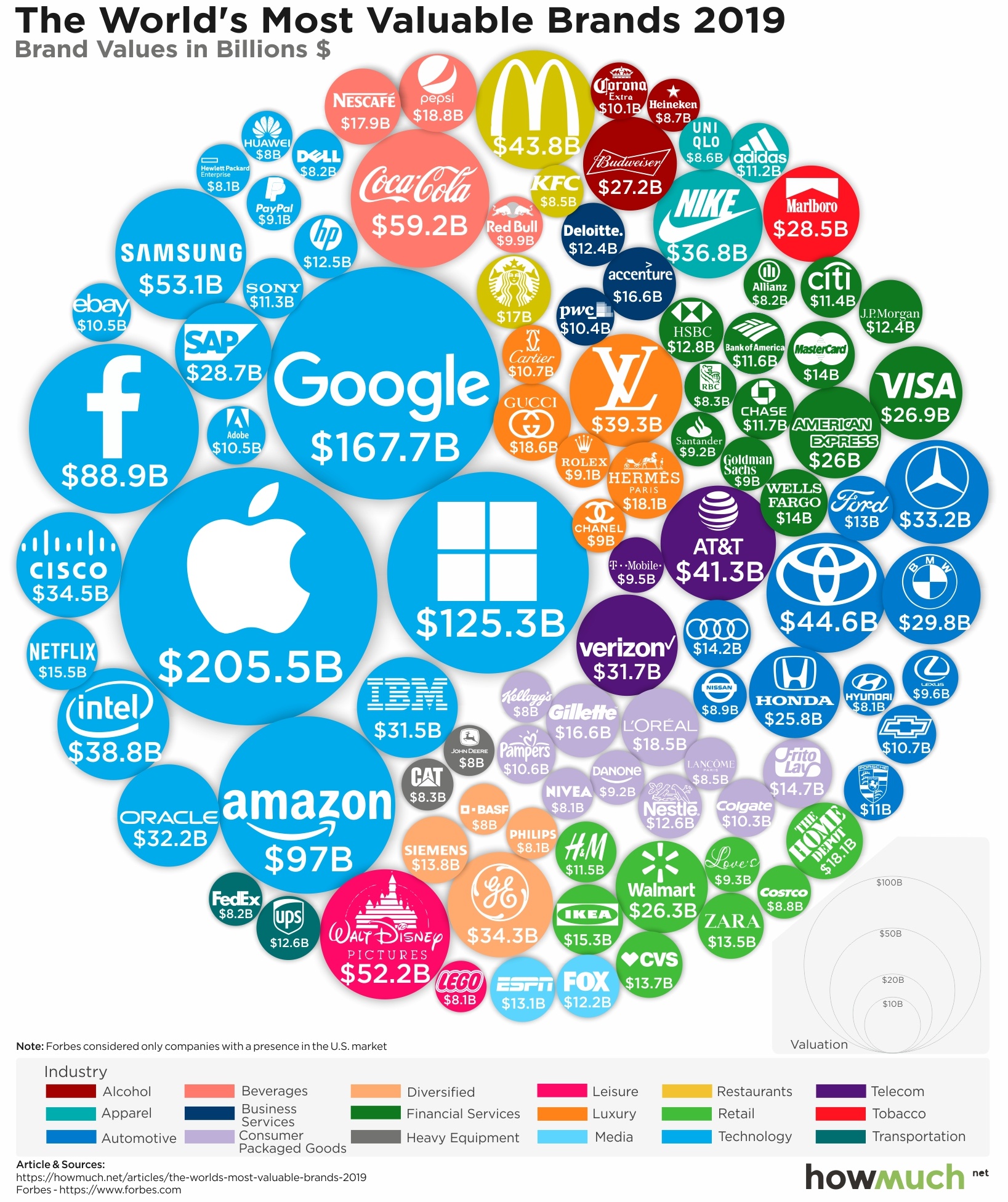
Credit: https://howmuch.net/articles/the-worlds-most-valuable-brands-2019
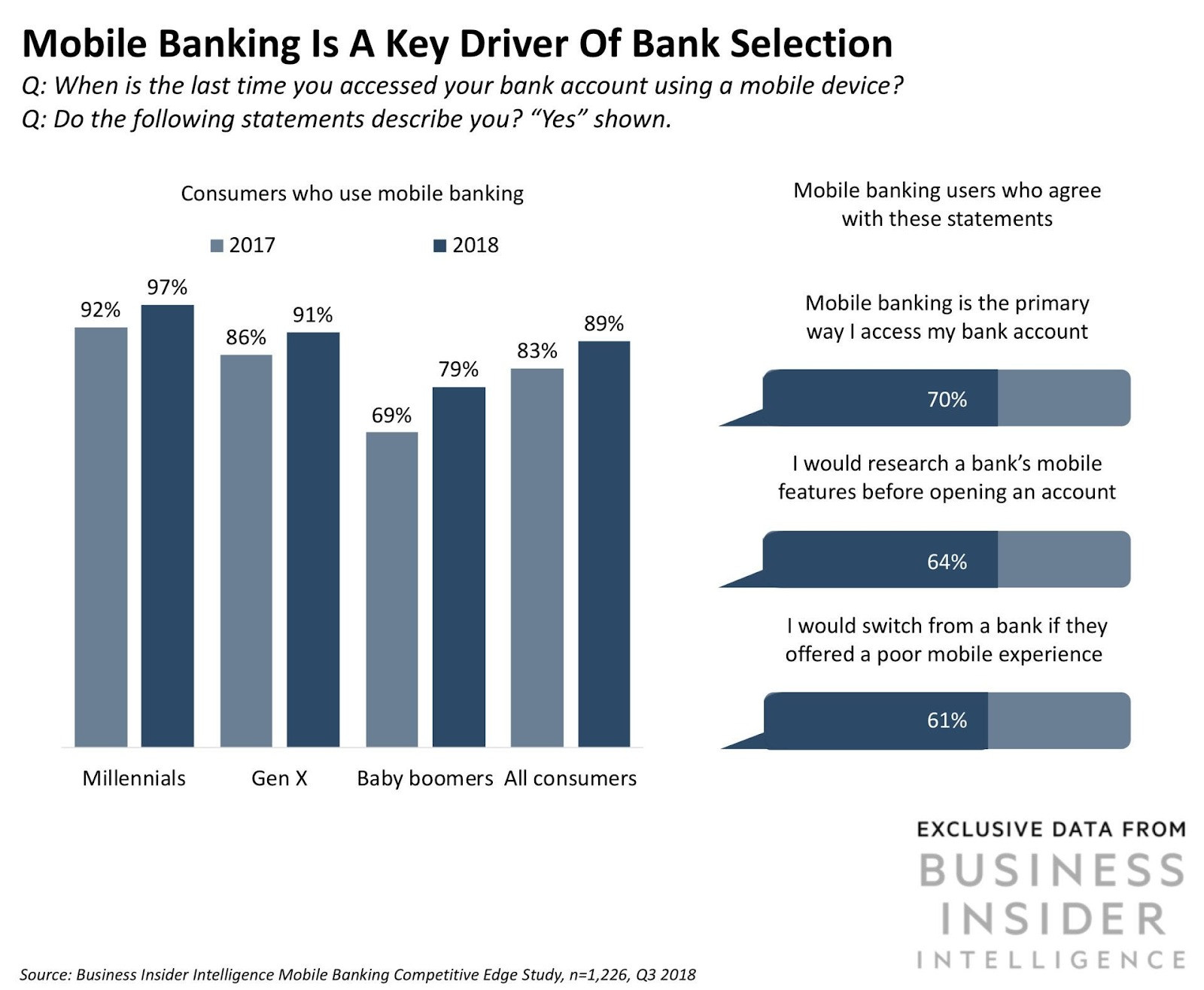 Remaining up-to-speed on mobile market trends is crucial in attracting and maintaining customers, and fintech is doing well in providing these solutions to banking customers, allowing them to be competitive with traditional banks.
Remaining up-to-speed on mobile market trends is crucial in attracting and maintaining customers, and fintech is doing well in providing these solutions to banking customers, allowing them to be competitive with traditional banks.
How Has Fintech Won over Customers?
The fintech revolution was led by those who understood the significance of design thinking, customer-centric solutions and thus created these services where banks have struggled. As a result, we have better finance management tools, various eWallets, mobile payments, and even Insurtech (insurance technology) solutions. This is all because fintech innovators put their customers first, took the time to understand their customers in the real struggles they faced in banking services through user experience research. Banks have tried to come out with their own digital solutions, but unfortunately, they tend to be overly complex with confusing user interfaces. Comparing this to the user-friendly interfaces of fintech solutions where they place an importance on creating a delightful user experience, it’s a no-brainer why customers would prefer to use something that makes their lives easier. Fintech has won over customers because they have tried to see and craft their digital service FOR customers, choosing to place their customers first and creating products customers want to use. They also constantly user test their design to monitor the usability of their website or app user interface. On the other hand, traditional banks place their focus on better loan solutions, decreasing fees and convenient branch locations but customers want accessibility, simplicity and comfort. It’s not to say that banks aren’t offering services that fintech companies are, take personal finance management tools for example. Almost all banks have them but they are so hard to find and even harder to use! Customers will invariably prefer to download a new app on their phone where the app is easier to use instead of trying to figure out how to use the existing complex solution from the bank. Let’s see how customers compare traditional banks with fintech on Google Play: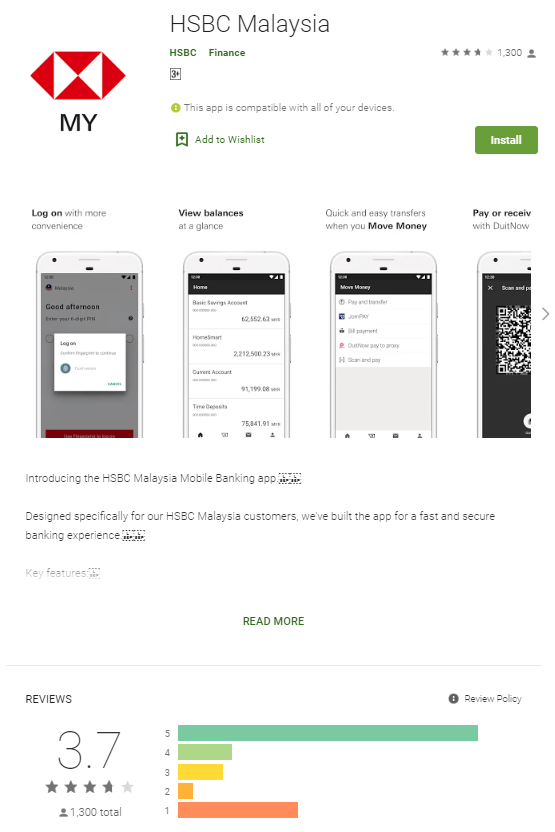 The HSBC Malaysia mobile app has a 3.7 rating from a total of 1,300 users
The HSBC Malaysia mobile app has a 3.7 rating from a total of 1,300 users
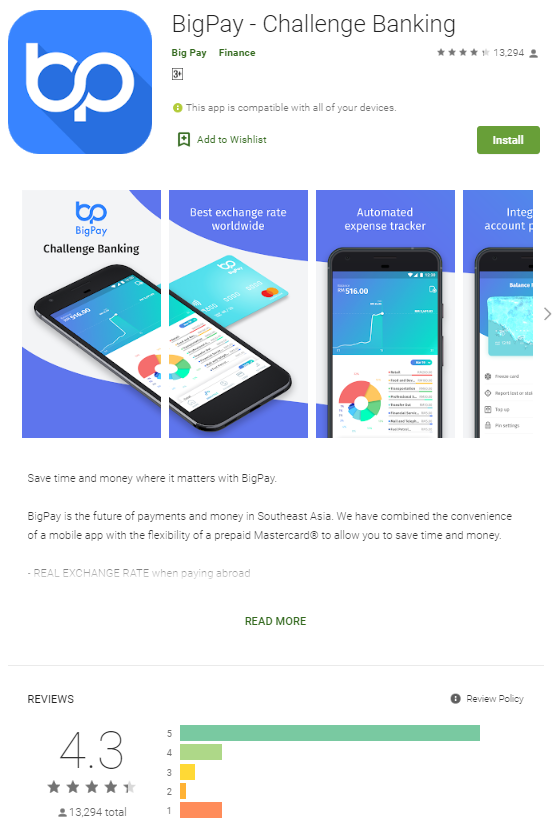 BigPay mobile app has a 4.3 rating from a total of 13,294 users
The difference of 1,300 users compared to 13,294 users speaks volumes, fintech solutions are easily winning over customers.
BigPay mobile app has a 4.3 rating from a total of 13,294 users
The difference of 1,300 users compared to 13,294 users speaks volumes, fintech solutions are easily winning over customers.
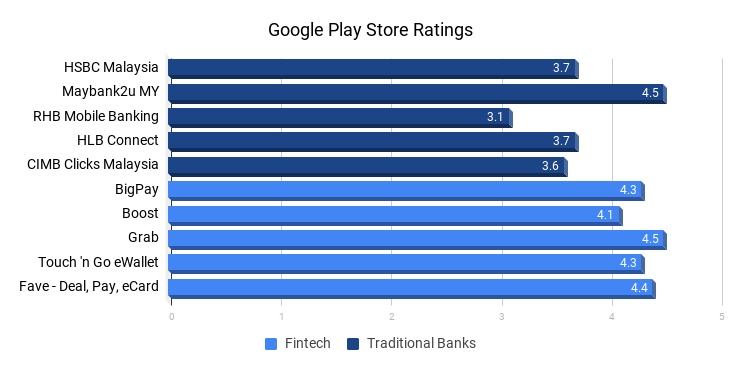
*Ratings obtained from Google Play Store as of 3rd August 2020
What Can Banks Do?
The concept of banking has been around since the time of the Roman Empire and will continue to be around, banks are not going to disappear but there’s a need to embrace change and adapt in order to survive. The challenge to embrace is to shift to thinking and creating for customers and delivering a pleasant user experience. According to Business Insider, in a survey they conducted with over 100 banking executives throughout North American, Europe and Asia Pacific, digital customer experience is the top priority for 79% of the respondents.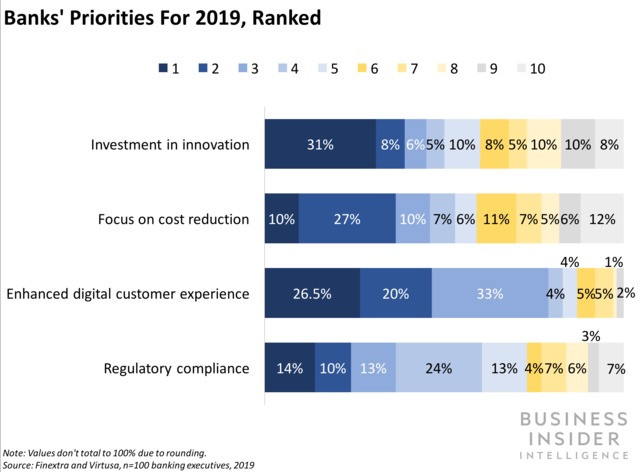 Digital customer experience or user experience is vital in keeping up with the digital age, it poses a challenge to traditional banks in changing operating models and culture that has been around for so long. The shift to approaching services with the customer at the heart needs to be made in order to deliver financial services that customers would use and enjoy.
The expectations are higher than ever, technology is ever-changing and evolving at high speed. Financial institutions, financial service companies and banks need to innovate in order to retain their existing customers and attract new ones, this could be in the form of personalized experiences across multiple channels. Design thinking is one of the best ways to solve this, but not only in the processes but at the very culture of the company.
Fintech is shiny and new, and customers have the freedom to switch banks easily. Some fintech companies are also developing allowing consumers to connect different bank accounts to the same platform, making it easier for consumers to consolidate and view all their finances in one place. Banks should put the customer at the centre and revolve everything around that concept. Having great online services that are easy to use is a good step in the right direction.
In fact, traditional banks and finance companies are collaborating with fintech companies in integrating them into their own ecosystem. This is a great way to stimulate innovation and in implementing fintech UX design.
In order to meet the expectation of their customers, banks should look beyond the traditional ways of banking. Collaborating with fintech, UX consultants, user experience researchers & design professionals who are experts in understanding customers’ needs, wants and expectations will help banks better deliver customer-centric digital solutions.
Digital customer experience or user experience is vital in keeping up with the digital age, it poses a challenge to traditional banks in changing operating models and culture that has been around for so long. The shift to approaching services with the customer at the heart needs to be made in order to deliver financial services that customers would use and enjoy.
The expectations are higher than ever, technology is ever-changing and evolving at high speed. Financial institutions, financial service companies and banks need to innovate in order to retain their existing customers and attract new ones, this could be in the form of personalized experiences across multiple channels. Design thinking is one of the best ways to solve this, but not only in the processes but at the very culture of the company.
Fintech is shiny and new, and customers have the freedom to switch banks easily. Some fintech companies are also developing allowing consumers to connect different bank accounts to the same platform, making it easier for consumers to consolidate and view all their finances in one place. Banks should put the customer at the centre and revolve everything around that concept. Having great online services that are easy to use is a good step in the right direction.
In fact, traditional banks and finance companies are collaborating with fintech companies in integrating them into their own ecosystem. This is a great way to stimulate innovation and in implementing fintech UX design.
In order to meet the expectation of their customers, banks should look beyond the traditional ways of banking. Collaborating with fintech, UX consultants, user experience researchers & design professionals who are experts in understanding customers’ needs, wants and expectations will help banks better deliver customer-centric digital solutions.
Summary
A combination of these strategies can help banks to compete with fintech disruptors in the future banking industry:- Embrace change and adapt, update operating models and culture
- Customer-centric: shift to thinking and creating for customers at the heart
- Aim to deliver a pleasant user experience for your customers
- Invest in user experience research and usability testing to validate their digital service really meets end-user expectation
- Collaborate with fintech, UX consultants, user experience researchers & design professionals
